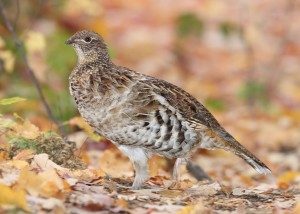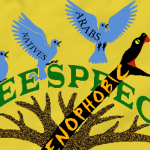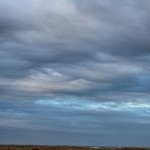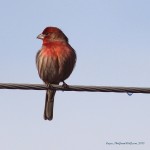I have been reading through a collection of Aldo Leopold’s classic nature writing, A Sand County Almanac as well as some essays from Round River. Leopold was a naturalist who appreciated the beings of the wilderness both as he relied on them for food and fuel, but also as autonomous animals, plants and places. One of the themes that has resonated strongly with me is that of poignant loss. Throughout his writings, he mourned the extinction of native species, whether from a particular habitat or in entirety. He wrote a remarkable eulogy on the extinction of the Passenger pigeon, and spoke the finals days of a solitary old grizzly bear that was the last of its kind on a mountain in Arizona. And, of course, there was his famous description of killing a wolf and her pup for no reason other than that they were wolves, and how deeply that affected him.

In one essay, Leopold speaks of particular animals holding the numenon of a place. The numenon, in this case, is the linchpin of a place’s identity–while the loss of any species changes a place, the numenon is one that especially carries the immeasurable, yet still perceptible, spirit of that place. In one case:
Everyone knows, for example, that the autumn landscape in the north woods [of Wisconsin] is the land, plus a red maple, plus a ruffed grouse. In terms of conventional physics, the grouse represents only a millionth of either the mass or the energy of an acre. Yet subtract the grouse and the whole thing is dead. An enormous amount of some motive power has been lost. (*p. 146)
And in the case of an individual animal, the grizzly bear nicknamed Bigfoot:
No one ever saw the old bear [on the mountain Escudilla], but in the muddy springs about the base of the cliffs you saw his incredible tracks. Seeing them made the most hard-bitten cowboys aware of bear. Wherever they rode they saw the mountain, and when they saw the mountain they thought of bear. Campfire conversation ran to beef, bailes, and bear. Bigfoot claimed for his own only a cow a year, and a few square miles of useless rocks, but his personality pervaded the country…[after his death] Escudilla still hangs on the horizon, but when you see it you no longer think of bear. It’s only a mountain now. (*p. 143-5)
Arguably the more charismatic animals, plants, and places are often seen as the most irreplaceable, when in fact all are important and often it’s the tiny ones on whose backs and stems the rest of the ecosystem rests. But if we look instead at the greater concept of the numenon as Leopold uses it, rather than just the individual species chosen for it, it’s a great deal like the Genius Loci, the spirit of a place. And all of the above are representatives of what gives a place its unique qualities, the je ne sais quoi, even if we can’t put a label to those qualities themselves. These are not quantifiable in the way that bird counts and the momentum of a waterfall are. They’re exceptionally subjective; it’s arguable that those of us who value a place for what it is create its spirit, while we cannot make a land developer or oil baron see beyond the cash value of the physical natural resources. It’s an aesthetic judgement, but no less crucial for that.

So here’s an exercise for you this weekend: think about, or even visit, one of your favorite places, wilderness or otherwise. Consider what the numenon, the place-spirit, the je ne sais quoi, of the place is for you personally, and what being(s) you would most sorely miss if they were gone from there forever. Whose absence would have the most impact? And why are these important to you? How does your connection to that being (or small handful of beings) affect your relationships with the rest of the system? Consider these, and move forward with them.
* Block quotes from A Sand County Almanac: With Essays on Conservation from Round River by Aldo Leopold, published 1986 by Ballantine Books, New York.











